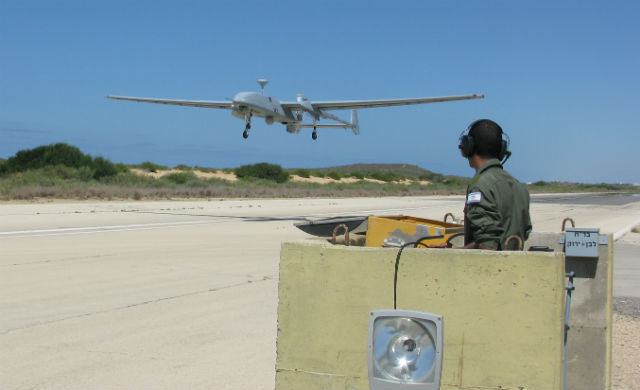The Israeli air force is being called on to expand its use of Israel Aerospace Industries Heron unmanned air vehicles, as the system's attributes become better known.
Payloads carried by the Heron 1 "Shoval" aircraft operated by the air force's 200 Sqn from Palmachim air base are also being upgraded continuously, to allow the type to perform numerous missions.
"We have in the air at least two Herons 24 hours a day, and sometimes we have to divert another one from a training flight to help in the performance of the missions," says the unit's deputy commander, who can be identified only as Maj S. "We actually combine the training with operational flights," Maj S added.
 |
|---|
Arie Egozi/Flightglobal |
One of the busiest squadrons in the Israeli air force - and the first to have flown UAVs - the unit also operates IAI's turboprop-powered Heron TP/"Eitan", which offers longer endurance and greater payload capacity.
"The number of our clients is climbing, as the field commanders see the capabilities that we can supply," says Maj S.
Equipped with an electro-optical/infrared payload which also has the capability to designate targets, the Heron 1 is flown along Israel's borders with Gaza and Lebanon. In Gaza the type is used mainly to detect any evolving terrorist act, which has recently mainly involved the launch of rockets. If preparations for a launch are detected the UAV is used to get an accurate fix of the firing position, so that it can be attacked within seconds.
The squadron's UAV are also used for maritime patrol missions, during which Israeli navy personnel are in the ground control station, operating the payloads.
While the air vehicles can be operated using an automatic take-off and landing capability, which Maj S describes as "a nice to have thing", the squadron instead opts to perform the tasks using an external pilot, who stands at the side of the runway near the ground control station.
 |
|---|
Arie Egozi/Flightglobal |
Maj S says the Heron 1 is very reliable, and notes that if an engine failure occurs it can still glide to the ground, usually without sustaining major damage on landing.
"In such cases control is made from the ground station," he says.
Source: Flight International



















